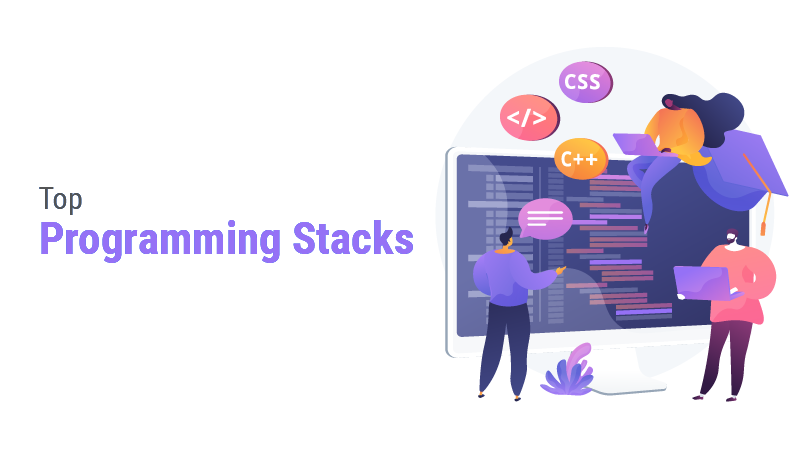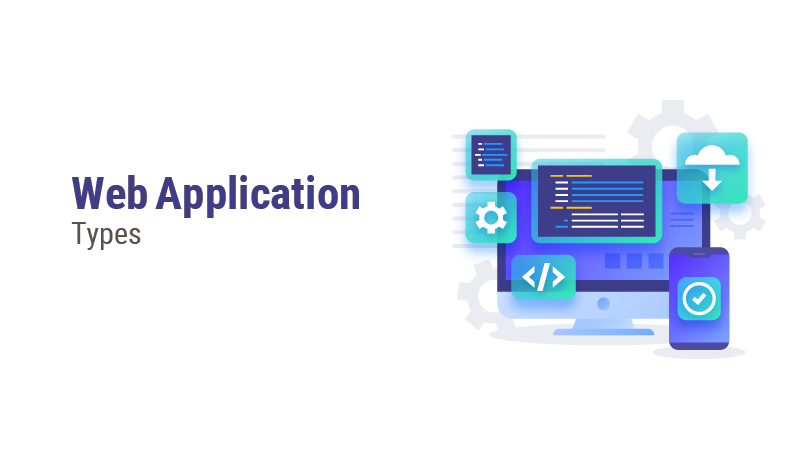Top 10 Programming Stacks

Are you planning to utilize software development services for your business? If so, then let’s talk about the software stack otherwise known as the development stack or technology stack. Before building software for your organization, you need to make sure that the right technology stack is used in the development of your software. To choose the right software stack, you must have a proper understanding and knowledge about software stack as there are a lot of stacks available in the market, from those you should pick the apt one.
What is a Programming Stack?
A technology stack comprises a bundle of tools, frameworks, technologies, and languages that enable us to develop software solutions, products, mobile and web applications, etc. To put it simply, consider your software like a house. A house needs pillars, building materials, and other tools to make it functional. A stack includes building materials and tools required for the buildout and efficient functioning of the software. These technology stacks are responsible for bringing life into every software product we depend on. This affects the design, functionality, and future measurement capability of mobile or web applications.
There are mainly two elements for a tech stack:
- Front-end/ user-end/ client-side – which includes JavaScript, HTML, CSS.
- Back-end/ server-side – includes operating systems, programming languages, servers.
Top Software Stacks
With the changing standards and trends in software development, it is important to be aware of the top-ranking technological trends which are currently dominating the market. You will be able to build an efficient product for your business by evaluating the strengths and weaknesses of various application stacks, which can help you to reduce risks in development. Here are some of the major software stacks in the current market:
The MEAN Stack
Being one of the most popular tech stacks, MEAN offers multiple advantages to the developers. One of the notable benefits is that it uses a single language (JavaScript), thereby saving time and cost for organizations already having JavaScript specialists to write user-end code. In addition, you can reuse the same code throughout the entire application, reducing unnecessary redundancies. An added advantage is that every standard technology is free and non-proprietary. Since it offers scalability and flexibility, it is the best choice for various websites and interactive applications.
The MERN Stack
There is not much difference between MERN and MEAN, basically, they are similar. The only dissimilarity is that the Angular.js in MEAN is replaced with React. React Integration is one of the main advantages of MERN as it has a strong library, the capacity to use codes simultaneously across browsers and servers, and offers full-stack development options (both client-side and server-side). In addition, flexibility and efficient development of front-end operations are notable features of React.
The MEVN Stack
MEVN is the second version of MEAN other than MERN, which replaces Angular.js of MEAN with Vue.js. As the user-end framework. By integrating the best features of React and Angular.js, Vue.js has earned wide popularity among developers. It offers clear programming, excellent performance, and is very simple to learn.
LAMP
The name LAMP stands for:
- L – Linux (Operating system)
- A – Apache (HTTP Server)
- M – MySQL (Relational database management)
- P – PHP (Programming language)
When it comes to technology stack models, LAMP is a basic model in the industry. In web development, it provides the best cost-effective, flexible, and highly operational web applications, and is still one of the first widely used open-source software stacks.
ASP.NET
Recent years have witnessed the emerging popularity of Microsoft’s .NET, which can operate on Windows as well as Linux because of its lightweight nature. Microsoft’s adoption of open source technologies has attracted the eyes of developers around the world. Some of the common application tech stacks by Microsoft such as Microsoft Azure, SQL Server, ASP.NET MVC, and IIS are used by .NET to develop applications.
The Ruby Stack
Ruby on Rails (RoR) is a development environment that uses a vigorous programming language named Ruby. It is a ‘ready to operate’ stack that makes quick development of applications and simplifies the whole development process. If a user-end web development app is written in Ruby programming language, then there is no need for professional knowledge to work on it. This enables you to use the default structures for handling databases and web pages.
Django Stack
Django stack is the object-centered programming environment of Python. Python is one of the rapidly emerging languages. It is a simple language and that is why it has been taught to college students as a development language for beginners. This stack promotes rapid development and simplifies deploying Django software, which allows users to focus more on the business logic rather than setting up the server-side. It comprises Python, MySQL, JavaScript, and Django. Python has been widely used in data science and machine learning, which makes it common and popular among the masses.
Flutter for Web
In a cross-platform development world, flutter can be considered as a game-changer. When you use flutter, there is no need to waste time on deployment and it uses similar UI and business logic on every platform. Moreover, it allows you to add additional features, build a User Interface, and fix bugs without affecting the speed.
Java
With many new projects are being pulled into newer, lighter application stacks such as Node.js and ASP.NET, the popularity of java has faded over time. But it is still a favorite choice of enterprise applications and has been used widely by developers across the world.
Serverless technology stack
It is time to move to serverless stacks or build applications on cloud infrastructure. This computing platform offers kinds of services and tools, thereby simplifying infrastructure management. The best and first example for a serverless platform is AWS Lambda. With a serverless stack, spikes can easily scale up to thousands of users quickly and scale down as the spike decreases.
Wrap Up
So far we have discussed various stacks that can be used to develop software solutions or applications. But the point lies in how you choose your stack. There are certain factors to be considered why choosing a stack for your company – scalability, the purpose of your project, final outcome, functioning of the product, the capacity of your server – are some of the things to be noted. Always keep in mind that you don’t have to choose a stack just because it is used by a big company, choose the one for yours.
Get Started with our Custom Software Development ServicesBlogs by Category
AppForms Artificial Intelligence Blockchain Call Centers Chatbots Cloud Computing Data Management Design Digital Marketing Digital Transformation Enterprise Applications FinTech Insights LowCode Development Microsoft Mobile Apps News Office 365 Robotic Process Automation Security SharePoint Software Development Web Application8 Types of Web Applications

2024-05-27 15:38:15